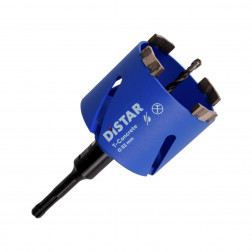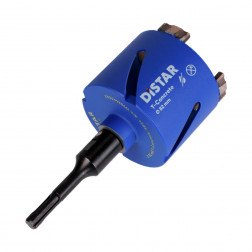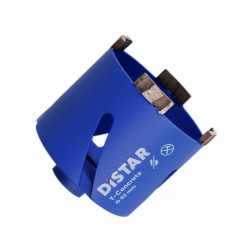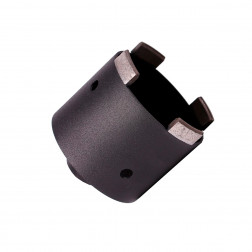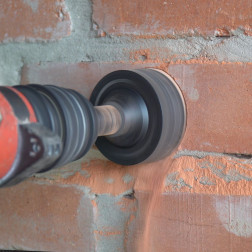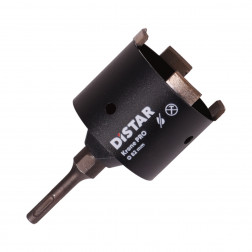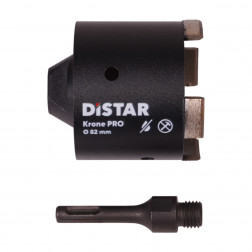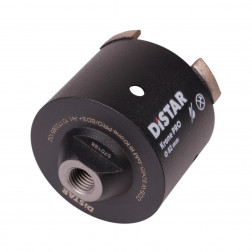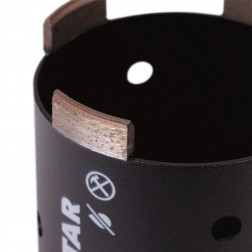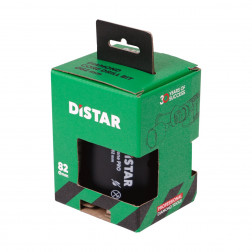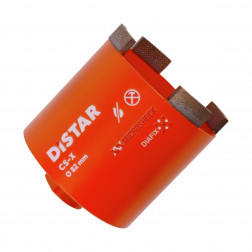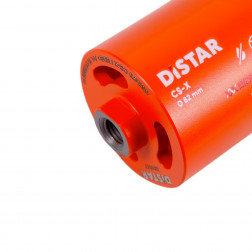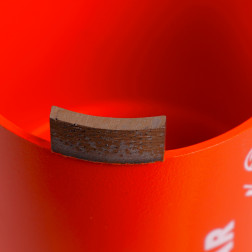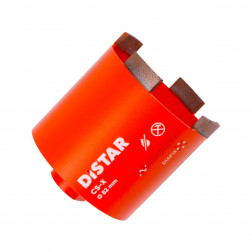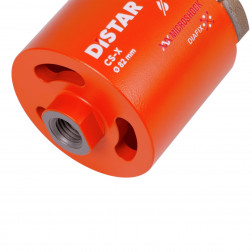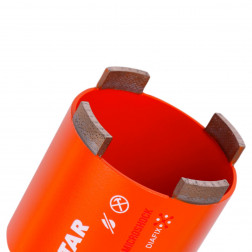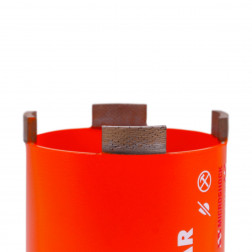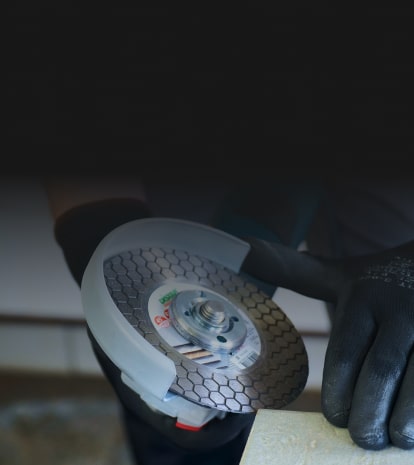Core drills for Perforator 82
21 modelsDiamond drill bits for pneumatic hammer
Concrete is one of the toughest and most difficult building materials to work with. It is very common for craftsmen on construction sites to have to deal with the drilling of technological holes in concrete.
One of the most common tools for drilling small holes in concrete is the pneumatic hammer. In addition to concrete, it handles other building materials with ease, be they brick, aerated concrete, foam block or others. Diamond drill bits for pneumatic hammers are used as consumables for drilling holes.
Almost every handyman who does repairs has a pneumatic hammer in his arsenal, because it can be used to carry out many construction operations: drilling socket boxes, drilling holes for dowels, dismantling building materials and much more. If you will be using your pneumatic hammer primarily for drilling, you should pay attention to the following parameters:
- Power. Since concrete can be encountered on many construction sites, and concrete is often very hard, it is better to have a more powerful tool in your arsenal. Domestic pneumatic hammers have a power rating of up to 900 W and professional hammers have a power rating of up to 1500 W. The more powerful the equipment, the longer it can run without interruption.
- Type of power supply. It is highly undesirable to select a battery-powered pneumatic hammer for such work, as the high load on the drive will quickly drain the battery. Networking equipment is the best solution for such tasks.
- Operating conditions. Pneumatic hammer can have 3 modes of operation - drilling, drilling with impact and crushing without rotation. Drilling with diamond consumables takes place exclusively in hammerless mode. But as the power tool can also be used for other purposes - it is better to have all 3 modes.
- Revolutions. A technical feature of pneumatic hammers is that the higher the speed, the lower the power. For drilling in heavy building materials it is important that the pneumatic hammer is powerful, so a model with a speed of 800-1000 rpm and no more is desirable.
The most common operation when drilling in building materials with a pneumatic hammer is for socket outlets. Distar manufactures 3 drill bit diameters for such purposes
- 68 mm. Virtually all domestic sockets fit into the technological hole of this diameter without any gaps. It is important to mark the future hole very accurately when using such a drill bit.
- 72mm. When making this hole, we can already shift the inside of the socket slightly, which is quite handy if the markings were slightly inaccurate.
- 82mm. This drill bit is used when drilling holes for junction boxes.
The process of drilling holes for socket boxes refers to the roughing up process, as in the future such a hole will be hidden from the human eye and is carried out exclusively in dry mode, without any coolant supply. This process can be divided into several stages:
- Stop drilling. It is not easy to start drilling into concrete or other building material, as the drill bit can slide in different directions. An alignment borring machine is used to drill comfortably. A hole is drilled in the centre of the future hole, usually 6 mm in diameter. The borring machine is then inserted into the diamond consumable and this into the pneumatic hammer itself, and a 6-10mm deep groove is hammered in without impact. The alignment borring machine is then removed. This process is enabled by a magnetic adaptor developed by Distar.
- Drilling. It is imperative that the drilling process takes place in hammerless mode. To increase the speed, the drill should be jiggled so that it deflects 10-15 degrees off its axis. This improves dust extraction and diamond sharpening, which has a positive effect on machining speed. However, do not get carried away with this process, as a strong deflection from the axis will wear out the drill bit body.
- Flushing-out of core. Once we have drilled the hole to its full depth, we need to remove the core. To do this, simply tweak it with a framing chisel or chisel and it will break off.
We would like to point out the fact that in addition to rough holes in concrete, bricks and other building materials, holes in finish cladding materials can also be made with the pneumatic hammer. TM Baumesser has a range of diamond drills with diameters from 6 to 70 mm for drilling ceramic and porcelain tiles with a pneumatic hammer.
Drilling work in this type of material also takes place in non-impact mode, but with a coolant supply, otherwise the diamond consumable could overheat, resulting in low life or damage to the tiles.
Drilling in most building materials is accompanied by a lot of dust and to minimise this you can use a special device from TM Mechanic, the DrillDuster 2.0.
On our website you can find diamond consumables for pneumatic hammer for both rough work (concrete, bricks and other materials) and for finishing tile drilling.
